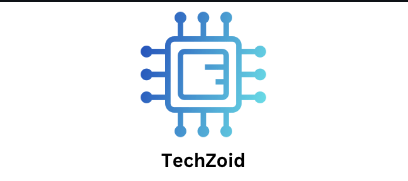What Are AI Tools?
Artificial intelligence (AI) tools are software programs, platforms, or systems that employ AI methods to carry out activities that have historically required human intellect. Natural communication, learning, thinking, problem-solving, and decision-making are some examples of these tasks. Artificial intelligence (AI) solutions are flexible and may gradually enhance performance through data analysis and machine learning, in contrast to traditional software that follows set rules and instructions. They are made to decipher data, spot trends, and provide results that mimic cognitive processes in humans.
Important Purposes of AI Tools
AI tools are mostly used to improve the intelligence and efficiency of processes. They can find insights that may otherwise be overlooked, propose the best solutions, and evaluate enormous amounts of data far more quickly than people. For instance, chatbots can rapidly respond to customer support queries, and analytics tools driven by AI may predict consumer behavior. Furthermore, a lot of AI products specialize in automation, which enables businesses to cut down on tedious work and concentrate on more important duties. Among the most often included features in these tools are recommendation engines, computer vision, natural language processing (NLP), and predictive modeling.
Types of AI Tools
Various types of AI tools are available based on their intended use and sector. The foundation for creating intelligent algorithms is provided by machine learning systems like PyTorch and TensorFlow. Examples of commonplace AI systems that simplify personal duties are virtual assistants such as Google Assistant, Alexa, and Siri. AI-powered content production systems are capable of producing photos, writing essays, and even creating music. AI risk assessment tools in finance protect assets and stop fraud, while AI diagnostic systems in healthcare assist physicians in accurately diagnosing illnesses. While each kind of AI tool tackles a different set of problems, they ultimately work toward the same objective: enhancing human potential.
AI Tools’ Advantages
The benefits of AI technologies are extensive. Efficiency is one of the most obvious advantages as these technologies can process and provide results much more quickly than human techniques. Businesses may also save money by automating procedures, which eliminates the need for a lot of human labor in repeated tasks. AI technologies also improve accuracy and decrease mistakes, which is important in domains like engineering and healthcare. Additionally, they offer individualized services, such customizing product suggestions for each client. AI solutions provide businesses a competitive edge in the market by providing real-time information that help them make better decisions.
Difficulties in Using AI Tools
Although AI technologies have numerous advantages, there are drawbacks as well. Data privacy is one of the main issues since these technologies need a lot of information to work properly. Sensitive information may be exploited or made public if it is not handled properly. The possibility of job displacement when automation replaces some repetitious occupations is another difficulty. Furthermore, bias can still be present in AI tools; if the data they are trained on is biased, the results may also exhibit bias. For smaller businesses, the expense of deploying AI technologies and the requirement for qualified personnel to oversee them may also be a deterrent.
AI Tools’ Future
With the rapid advancement of technology, the future of AI tools appears bright. These techniques will become more potent and widely available as deep learning, computer vision, and natural language understanding advance. Their potential uses will be further increased by integration with other cutting-edge technologies like blockchain and the Internet of Things (IoT). AI technologies are anticipated to become increasingly more prevalent in daily life in the upcoming years, from sustainable energy solutions to smarter cities and tailored healthcare. As these tools develop, they will influence how people use technology in general as well as how industries function.
Conclusion
The next phase of the digital revolution is represented by AI technologies, which enable people and organizations to complete activities more quickly and intelligently. They are now useful solutions that are actively changing industry and daily life rather than future ideas. Although issues like data privacy and ethics must be resolved, AI systems provide a wealth of options. Society can fully utilize these advances to build more intelligent systems, better decision-making, and a more interconnected world by adopting them ethically. In the end, artificial intelligence (AI) tools are meant to augment human potential and provide new opportunities, not to replace them.
